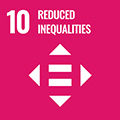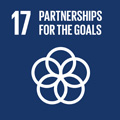- Docente: Tullio Salmon Cinotti
- Credits: 6
- SSD: ING-INF/05
- Language: Italian
- Teaching Mode: In-person learning (entirely or partially)
- Campus: Bologna
-
Corso:
First cycle degree programme (L) in
Automation Engineering (cod. 9217)
Also valid for First cycle degree programme (L) in Electronics and Telecommunications Engineering (cod. 9065)
Learning outcomes
Principles and models of digital design. Information coding. Methods for analysis and synthesis of combinational and sequential circuits.
Course contents
Prior knowledge required: NONE
SYLLABUS
Principles and examples of information coding.
Signed and unsigned integers, two's complement and introduction to binary arithmetic.
Boolean functions, boolean algebra and combinational circuits.
Main combinational components and their scalability.
Programmable combinational circuits, arithmetic and logical units.
Sequential logic: structural and behavioral models.
Detecting transition sequences versus time intervals: the asynchronous and the synchronous (clocked) behavioural models.
Analysis and synthesis of Moore and Mealy machines.
Storage elements: SR-FF and D-FF.
Hierarchical design: entity and architecture of a digital circuit
Rising the abstraction level from gate to component level.
Basic components of complex digital circuits: counters and registers.
Combining counters, registers and combinational logic into simple digital systems.
Introduction to a CPU architecture: Data Path and Control Unit
Approaching design verification with logic design tools: design entry and design simulation (not included this year).
Readings/Bibliography
Peter J.Ashenden, Digital Design An Embedded Systems Approach Using VHDL, Morgan Kaufmann (Only chapters 1 to 4 and 6 are relevant to this course).
Teaching methods
5.5 classroom hours per week, 60 hours altogether.
Assessment methods
Assessment shall be based on the outcome of a written test.
Test time: 2.5 hours approximately
Test structure: two sessions on the same day, as follows:
Session 1: theoretical questions (max 50 minutes)
Session 2: design exercise (90 minutes approximately)
Teaching tools
Slides stored in the platform named "Virtuale" are presented and interactively discussed in the classroom.
Office hours
See the website of Tullio Salmon Cinotti
SDGs



This teaching activity contributes to the achievement of the Sustainable Development Goals of the UN 2030 Agenda.
